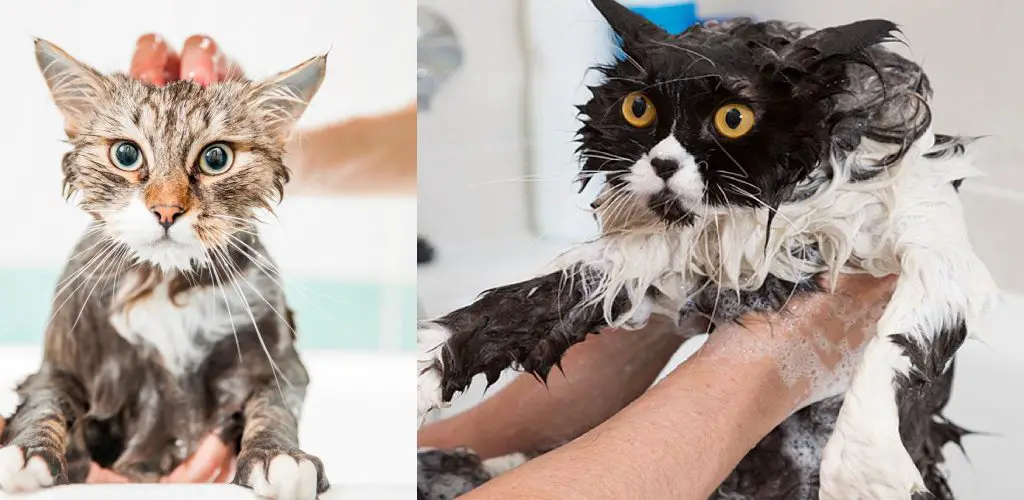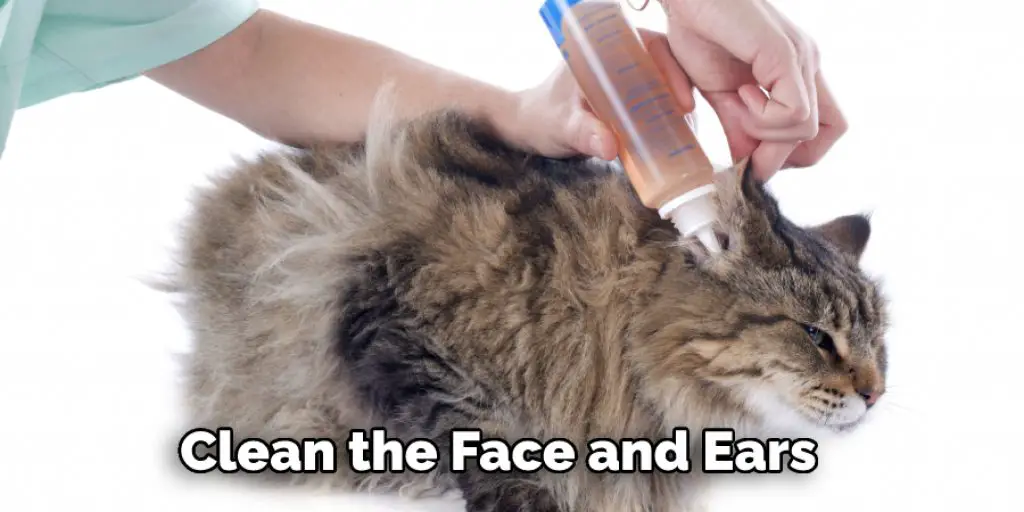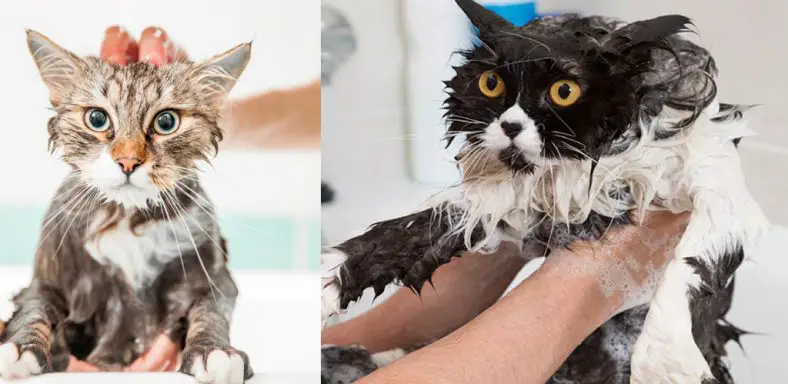If you have a stray cat that regularly visits your home, you may be wondering how to wash it. It’s not as difficult as you might think, but there are a few things you need to keep in mind. In this article, we will discuss the best way how to wash a stray cat, as well as some of the supplies you will need. We’ll also provide tips on making the process easier and more comfortable for both you and the cat. So if you’re ready to bathe your furry friend, keep reading!

Cats are generally pretty clean animals, and they do an excellent job of grooming themselves. However, there are times when a bath is necessary. For example, if your cat has been rolling around in the dirt or gets into something smelly, you’ll want to give them a good wash. You may also need to bathe a sick or injured cat to help them feel better. In any case, it’s always best to consult with your veterinarian before bathing your cat to be on the safe side.
Contents
A Step by Step Guide on How to Wash a Stray Cat
Step 1: Determine if the Cat Is Truly Stray
If you find a cat that seems to be alone, it’s essential to determine if it is genuinely a stray before taking any action. For example, if the cat has a collar and tags or sees apparent signs of an owner (such as a bowl of food or water nearby), it’s best to leave it alone. You can also check for lost pet posters in your neighborhood.
If you’re sure the cat is indeed stray, you’ll need to take some steps to ensure both the cat’s safety and your own. First, wear gloves when handling the cat since they may be carrying diseases. It’s also essential to keep the cat contained until you can take it to a shelter or veterinarian, as they may be aggressive.
If you have an extra pet carrier or crate, that will work well for containment. If not, you can use a large cardboard box with holes punched for ventilation. Line the bottom of the container with towels or blankets to make the cat more comfortable.

It’s best not to attempt to feed the cat yourself, as they may become aggressive if they’re hungry. Instead, once you have the cat contained, please take it to a local animal shelter or veterinarian so it can be checked for diseases and adequately fed.
Step 2: Gather Your Supplies
You’ll need a few supplies before you begin washing the cat. First, find a sink, bathtub, or large container in which the cat can fit comfortably. You’ll also need some mild shampoo, a towel, and a cup for rinsing the cat. It’s best to use pet-specific shampoo, as human shampoo can be harsh on their skin.
If you don’t have any pet shampoo on hand, you can use a small amount of baby shampoo instead. Avoid using dish soap, laundry detergent, or other cleaning products, as these can be harmful to the cat.
Step 3: Wet the Cat’s Fur
Before you begin applying any shampoo, it’s important to wet the cat’s fur entirely. This will help the shampoo work better and remove all of the dirt and grime. Use lukewarm water, as hot water can be uncomfortable for the cat.
You can either hold the cat in your arms or place them in the sink or bathtub. Slowly pour water over their back and continue until their fur is thoroughly wet. Avoid getting water in their face, as this can cause them to panic.
Step 4: Apply Shampoo and Lather
Now it’s time to apply the shampoo. Start by pouring a small amount into your hand and then massage it into the cat’s fur, working from their head down to their tail. Be sure to avoid their face, eyes, and ears. Once the shampoo is evenly distributed, use your hand to lather it into a thick foam.

Let the shampoo sit on the cat’s fur for a few minutes to give it time to work. Then, use your cup to rinse away the suds entirely. Be sure to use clean water, so you don’t leave any residue behind.
Step 5: Clean the Face and Ears
The face and ears are two of the most important areas to clean when washing a cat. However, they can also be the most delicate, so it’s essential to care when cleaning them.
To clean the face, dampen a soft cloth with water and gently wipe away dirt or debris. Avoid getting water in their eyes, as this can irritate them. Next, use a cotton ball soaked in mineral oil or baby oil to clean their ears. Finally, gently wipe away any wax build-up inside the ear canal.
Step 6: Dry the Cat
Once you’ve finished washing and rinsing the cat, it’s time to dry them off. Use a towel to pat their fur until slightly damp gently. Then, allow them to air dry the rest of the way. If it’s a cold day, you can turn on a fan or heater to help speed up the process.
Once the cat is dehydrated, brush its fur to help remove any knots or tangles. And that’s it! Now you know how to wash a stray cat safely and effectively.
Tips and Warnings:
Tips:
- If the cat is filthy, you may need to shampoo it more than once.
- Be sure to rinse the cat thoroughly to remove all traces of soap.
- If you are using a flea shampoo, be sure to follow the directions carefully. Some types of flea shampoo must be left on for a certain time before being rinsed off.
- After the bath, wrap the cat in a towel and help them dry off as much as possible. You can also use a hairdryer set on low to help speed up the drying process. Just be sure not to hold the dryer too close to the cat’s skin.

Warnings:
Do not use human shampoo on a cat. It can be harmful to their skin.
Be careful when bathing a scared or agitated cat. They may scratch or bite in self-defense.
If the cat has fleas, be sure to treat the environment and the animal to prevent re-infestation.
Never leave a pet unattended in a tub of water. They could drown.
Washing a stray cat can be a challenging but rewarding task. By taking the time to do it properly, you can help make sure that the cat is clean and comfortable and maybe even help them find a new home.
How Can I Wash My Cat Without Cat Shampoo?
One of the most important things you can do to keep your cat healthy and prevent the spread of disease is to wash them regularly. However, regular cat shampoo can be expensive, and it can also be harsh on your cat’s skin. If you’re looking for a cheaper or more gentle alternative, there are a few things you can try. One option is to use dish soap or baby shampoo.
These are gentle enough for your cat’s skin, and they’re also unlikely to irritate their eyes. Another option is to make your cat shampoo using vinegar and water. Just be sure to rinse your cat thoroughly after shampooing to avoid irritation. With a bit of experimentation, you should be able to find a washing solution that works well for both you and your cat.
Should I Bathe a Stray Cat?
If you’re considering taking in a stray cat, you may be wondering if you should bathe the cat. The truth is that it’s not necessary to bathe a healthy cat, as they can groom themselves quite effectively. However, some circumstances in which bathing a stray cat may be beneficial.
If the cat is covered in dirt, grease, or other substances that could harm their fur or skin, bathing them may be the best option. It’s also a good idea to bathe a stray cat if they have fleas or ticks, as this will help get rid of any parasites that may be living on their skin. Finally, if the cat seems to have an unpleasant odor, bathing them may help to freshen up their smell.

If you decide to bathe a stray cat, be sure to use a gentle, unscented shampoo designed specifically for cats. You’ll also want to avoid getting water in the cat’s eyes, ears, or nose, which could irritate. When you’re finished bathing the cat, thoroughly dry them off with a towel before letting them go back outside.
Conclusion:
If you have found a stray cat, please follow these tips on how to wash a stray cat and care for the animal. We all must do our part in helping these cats find their way back home. By washing and caring for them, we can help make them more comfortable until they can return to their families.


